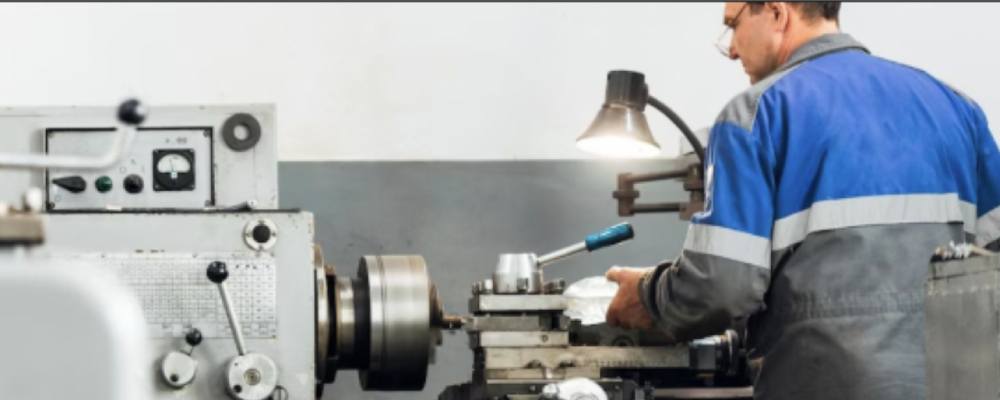AI for Machining: The Impact on Precision and Efficiency
Manufacturing is undergoing a change, particularly with the advent of Artificial Intelligence (AI) – an amalgamation of advanced statistical and mathematical techniques with computing technologies.
Presently, manufacturing sector is challenged, mainly amongst others, by the shortage of skilled manpower. Additionally, workforce attrition is another factor that adds to the challenges. In view of the problem, many projects and studies have been commissioned across the world to assess the effect of increased production costs due to unavailability of skilled labor. This is particularly relevant to high-wage countries grappling with labor shortages and increased demand.
Parallelly, Research and Development in both manufacturing and higher order computing has brought together the best of two fields. With advancements in AI, improvement in computing power, and their adoption into the processes, efficiencies of manufacturing processes have improved due to the inherent optimization that advanced algorithms bring with them.
The Fourth Industrial Revolution: AI as Central Pillar
To address the inability to meet the increasing demand due to labor shortages, Industry 4.0 was touted to represent the fourth industrial revolution [1], signifying improved processes and the ability to develop autonomous systems capable of running with minimal human intervention. Additionally, the integration of physical and digital environments was envisaged to bring together people, machines, ideas, and, most importantly, products at a common focal point.
Thus, work began on digitizing production lines and collecting and storing data. With improvements in sensing technologies, a variety of data were generated at high velocit, occupying high volume, necessitating research and implementation of sophisticated computing techniques involving the use of mathematical models to derive meaningful insights from large data sets. AI – a superset of Machine Learning (ML) and Deep Learning (DL) – represents this advanced computing technique.
Machining: The Cornerstone of Manufacturing
All manufacturing involves, to varying extents, the use of machines. The art and science of forming products – metals, wood, plastics, among others – could broadly be defined as the process of machining as depicted in [Fig. 1].
 Figure 1: A technician working on a lathe machine [Source: Adobe Stock]
Figure 1: A technician working on a lathe machine [Source: Adobe Stock]
Manual machining involves regular human intervention, implying that production rates and product quality squarely depended directly on human capability. Machining parameters were input based on human judgment and experience. The next iteration of machining came with an improved version of machines called Computer Numerical Control (CNC) machines. These machines were capable of simulating the product and had a high degree of automation compared to their predecessors [Fig. 2].
 Figure 2: Operations on a Computer Numerical Control (CNC) Machine [Source: Tufcot]
Figure 2: Operations on a Computer Numerical Control (CNC) Machine [Source: Tufcot]
Although CNC machines to a large extent automated production processes, machining parameters still depended on factors such as the experience of operators, material composition, machine tool quality, and delivery times, among others. The profitability of companies, logistics, and even interpersonal relations between entities depended on these variables.
In areas such as aerospace, oil and gas, and healthcare, where the dimensionality requirements are high, the margin for error is even narrower due to the criticality of application. The integrity of the products thus formed is again reliant on the operators and experience leading to pressure on management. However, AI could be a game-changer with its ability to mitigate the foregoing challenges.
AI in Machining: The State of art
Currently, AI is increasingly integrated into various aspects of machining, such as machine building, production, and quality inspections, to name a few. Ongoing research [3] assesses the application of ML in areas such as:
- Process Optimization:
Optimizing production during machining involves operating at optimum process parameters, which consequently yield optimal cutting forces. Higher cutting forces indicate high stress and strain on the cutting tool and the product, potentially leading to inferior product quality and higher capital requirement in form of tools. Therefore, based on generated data, ML models can predict cutting force and even design and operate at optimum process parameters. Predicting optimal tool paths [4] using ML and DL has been explored [Fig. 3]. As aerospace applications have stringent requirements, use of AI in developing process data sheet with optimal surface integrity requirements – a combination of process parameters, sub structure microstructures, and surface quality (based on cutting forces) could be established.
 Figure 3: ML model scores for tool paths for CNC milling operations [4]
Figure 3: ML model scores for tool paths for CNC milling operations [4]
- Product Quality:
Surface integrity encompasses surface quality, internal microstructure of the product, tool wear, and sometimes cutting forces developed during machining. For aerospace applications involving Titanium alloys like Gamma Titanium Aluminides and Ti-6Al-4V, specific microstructures are stipulated for specific applications. These microstructures can be affected by strain hardening or excessive heat generated during machining operations. Additionally, machining these parts is challenging due to dimensional accuracies and strict tolerances. ML models predicting cutting parameters in accordance with tool properties [Fig. 4], and using appropriate cutting fluids, have the potential to reduce changes in internal properties of these difficult-to-cut metals, leading to reduced rejections and improved financial health of SMEs and MSMEs in aerospace sectors.
 Figure 4: Overview of tool wear monitoring for milling using Deep Learning [5]
Figure 4: Overview of tool wear monitoring for milling using Deep Learning [5]
Conclusion: The Path ahead
- In summary, AI has become omnipresent and is increasingly employed, particularly in critical manufacturing areas of aerospace, oil and gas, and healthcare manufacturing. Additionally, due to high degrees of freedom during operations, the product quality and production rates are squarely dependent on the experience and good will of workforce.
- AI has the potential to become an optimization tool and help, if not substitute, the workforce in the critical manufacturing areas.
- Integrating AI into operations for measuring, assessing, optimizing, and predicting process parameters, product quality, and time requirements leads to resource and capital streamlining.
References
[1] Thyago P. Carvalho et al., “A systematic literature review of machine learning methods applied to predictive maintenance,” Computers & Industrial Engineering, vol. 137, 2019, 106024, https://doi.org/10.1016/j.cie.2019.106024.
[2] T. Borgi et al., “Data analytics for predictive maintenance of industrial robots,” 2017 International Conference on Advanced Systems and Electric Technologies (IC_ASET), Hammamet, Tunisia, 2017, pp. 412-417, doi: 10.1109/ASET.2017.7983729
[3] Mohsen Soori et al., “Machine learning and artificial intelligence in CNC machine tools: A review,” Sustainable Manufacturing and Service Economics, vol. 2, 2023, 100009, https://doi.org/10.1016/j.smse.2023.100009
[4] A. Fertig et al., “Machine Learning based quality prediction for milling processes using internal machine tool data,” Advances in Industrial and Manufacturing Engineering, vol. 4, 2022, 100074, https://doi.org/10.1016/j.aime.2022.100074
[5] X. Zhang et al., “Tool Wear Monitoring for Complex Part Milling Based on Deep Learning,” Appl. Sci., vol. 10, 2020, 6916, https://doi.org/10.3390/app10196916






